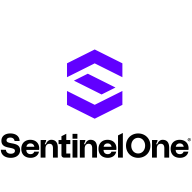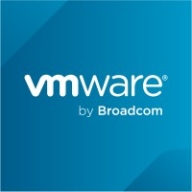


Lacework FortiCNAPP and VMware Carbon Black Workload are competing in the security solutions category. Lacework FortiCNAPP prevails in pricing and customer support, while VMware Carbon Black Workload leads in feature capabilities.
Features: Lacework FortiCNAPP provides a cloud-native application protection platform emphasizing compliance, anomaly detection, and cloud optimization. VMware Carbon Black Workload offers comprehensive threat detection, response capabilities, and extensive endpoint protection with real-time monitoring.
Ease of Deployment and Customer Service: Lacework FortiCNAPP features a simple deployment model with efficient customer service, ensuring easy integration. VMware Carbon Black Workload's deployment is more intricate due to its extensive feature set but is well-documented and supported by professional assistance.
Pricing and ROI: Lacework FortiCNAPP is known for its competitive pricing and rapid ROI, appealing to budget-conscious buyers. VMware Carbon Black Workload carries a higher initial cost, justified by its extensive features and potential long-term value for those prioritizing advanced security capabilities.
| Product | Market Share (%) |
|---|---|
| SentinelOne Singularity Cloud Security | 3.6% |
| Lacework FortiCNAPP | 2.4% |
| VMware Carbon Black Workload | 0.2% |
| Other | 93.8% |


| Company Size | Count |
|---|---|
| Small Business | 46 |
| Midsize Enterprise | 20 |
| Large Enterprise | 53 |
| Company Size | Count |
|---|---|
| Small Business | 4 |
| Midsize Enterprise | 4 |
| Large Enterprise | 4 |
SentinelOne Singularity Cloud Security offers a streamlined approach to cloud security with intuitive operation and strong integration capabilities for heightened threat detection and remediation efficiency.
Singularity Cloud Security stands out for its real-time detection and response, effectively minimizing detection and remediation timelines. Its automated remediation integrates smoothly with third-party tools enhancing operational efficiency. The comprehensive console ensures visibility and support for forensic investigations. Seamless platform integration and robust support for innovation are notable advantages. Areas for development include improved search functionality, affordability, better firewall capabilities for remote users, stable agents, comprehensive reporting, and efficient third-party integrations. Clarity in the interface, responsive support, and real-time alerting need enhancement, with a call for more automation and customization. Better scalability and cost-effective integration without compromising capabilities are desired.
What are SentinelOne Singularity Cloud Security's standout features?SentinelOne Singularity Cloud Security is deployed in industries needing robust cloud security posture management, endpoint protection, and threat hunting. Utilized frequently across AWS and Azure, it assists in monitoring, threat detection, and maintaining compliance in diverse environments while providing real-time alerts and recommendations for proactive threat management.
Lacework FortiCNAPP provides robust cloud security, combining vulnerability management and multi-cloud insight with user-friendly controls, machine learning detection, and compliance support.
Lacework FortiCNAPP specializes in cloud security by merging machine learning anomaly detection with agent-based vulnerability management to offer detailed alerts and compliance reports. Its comprehensive approach allows continuous monitoring across AWS and Kubernetes, providing insights from an attacker's perspective. The platform offers automation and seamless Slack integration, facilitating collaborative and efficient cloud security management. Users value its ability to handle multi-cloud environments and scan IAC scripts, configurations, and compute nodes across AWS and GCP.
What are the key features?Organizations across sectors leverage Lacework FortiCNAPP for cloud security, focusing on compliance, security posture, and vulnerability management. It is widely used for monitoring AWS and Kubernetes environments, scanning IAC scripts, configurations, and securing compute nodes. It supports multi-cloud security posture management and log ingestion, enabling companies to maintain strong cloud infrastructures without dedicated security layers.
VMware Carbon Black Workload is designed to enhance security for workloads in virtualized environments, offering cloud-native protection and threat detection tailored for protecting critical data and infrastructure.
By integrating advanced threat detection and visibility with workload security, VMware Carbon Black Workload provides an in-depth security solution for enterprises. It offers features that help mitigate threats effectively while maintaining a streamlined performance for virtualized resources. Users benefit from the seamless integration with VMware infrastructures and the capability to safeguard workloads against evolving threats without impacting system performance.
What are the key features of VMware Carbon Black Workload?
Why consider VMware Carbon Black Workload for your security needs?
In industries like finance and healthcare, VMware Carbon Black Workload is strategically implemented to protect sensitive data against cyber threats while maintaining compliance with stringent industry regulations. Its capability to integrate seamlessly with existing infrastructure makes it a preferred choice for enterprises seeking to secure their virtualized environments efficiently.
We monitor all Cloud Workload Protection Platforms (CWPP) reviews to prevent fraudulent reviews and keep review quality high. We do not post reviews by company employees or direct competitors. We validate each review for authenticity via cross-reference with LinkedIn, and personal follow-up with the reviewer when necessary.